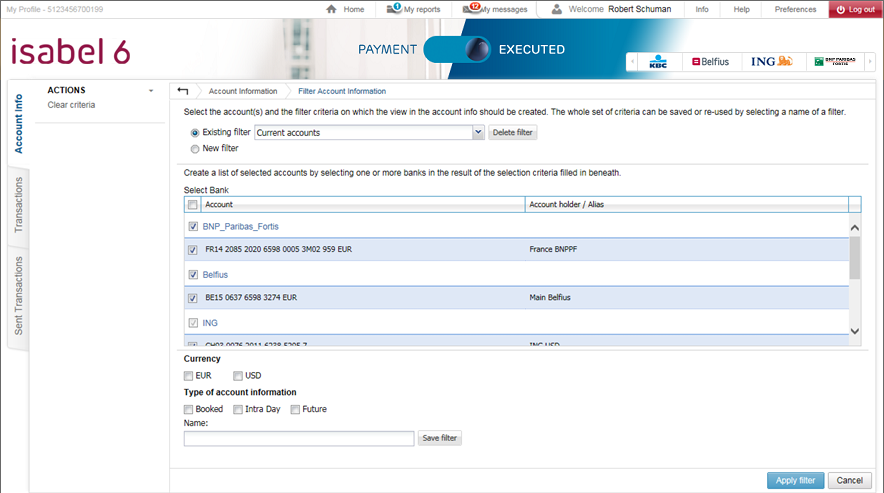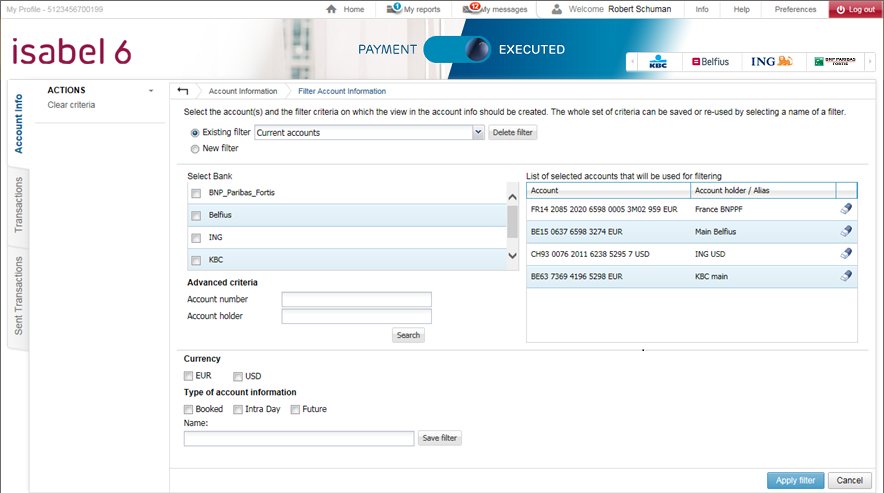Purpose of using filters
Using filters can be of great help to organize your account information area the way you want to. A single account can be part of multiple filters. You can create your own custom filters.
Examples:
- Only your most consulted account
- By type (savings or current account)
- All accounts from a specific bank
- Only your foreign accounts
- Only with a specific currency
- By a specific subsidiary
- ...
How to access
To manage (create, modify or delete) filters, go to the tab Account information and click on Filters in the left navigation menu. If you already have existing filters, you can easily switch between them through Account information.
Depending on the amount of available accounts a different view may appear
When you only have a limited amount of accounts.

When you have a large amount of accounts.

Managing filters
Creating a new filter or modifying one
- Go to the Filter window.
- If you want to modify an existing filter, select the existing filter from the dropdown list. The configuration of the existing filter will be loaded.
- Select the accounts you want to include in your filter.
Note: If you only have a limited amount of accounts, you can simply select the accounts you want to include. In case you have a large amount of accounts, you will need to search for the accounts using the Search feature.
How to use the Search when setting up filters?
- Optionally, select a specific currency or type of Account information.
- Booked: accounts which have booked statements (usually this includes almost all your accounts).
- Intra Day: accounts that have received Intraday (what is Intraday?).
- Future: accounts that have received Future info (what is Future info?).
- Once your filter is set up, you can:
- Save your filter by typing a name and clicking Save filter. If you want to modify an existing filter, simply type the same name and press Save filter (a confirmation to overwrite the existing filter will appear).
- Apply filter will go back to Account info with your filters configuration. Click Filter again to modify or save your filter.
Note: your filter will be lost if you do not save it.
Deleting an existing filter
- In the filter window, choose Existing Filter and select the filter from the dropdown list.
- Once selected, click Delete filter to remove the selected filter.
Note: no confirmation will be displayed.
Defining a default filter
Go to the preferences of Isabel 6, choose Account Info and choose your default filter


